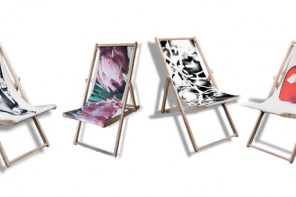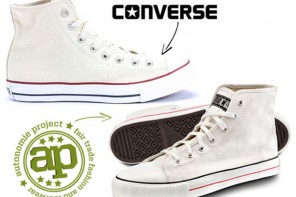Understanding our own personal relationship with clothing is often overlooked or misunderstood. How many of us truly know or care where all our clothing comes from or is made of, or if workers were paid a fair wage? The fashion design system combined with cultural habitats; have us purchasing cheap clothing at an astonishing rate.
Elizabeth L. Cline author of the newly published book, Over-Dressed, The Shockingly High Cost of Cheap Fashion, spent three years examining human relationships with clothing, and learning about the fashion industry. She writes about consumer purchasing choices and how a larger number of consumers are buying a greater quantity of poor quality clothing. What Cline is able to do with her writing is encourage people to learn about the impacts of their shopping. She reveals to us harsh facts about the fashion industry and she does so with the hope of giving us the power to see past a quick purchase. Each quick purchase has a story and impacts humans and the environment.
Her writing and the discussions of many who support her book have inspired me to learn about cheap fashion. What I slowly began to discover is cheap fashion runs on cheap energy.
Energy Used In Production
In all agricultural cases, to produce natural materials such as cotton requires a high input of energy. The production process for cotton includes energy inputs such as diesel fuel, nitrogen, and herbicides. According to the Western Farm Press, “To produce cotton from dirt-to-bale, the energy to create fertilizers represents about one-half of the total energy used in non-irrigated production. In irrigated cotton, drawing 40 inches of water from a 300-foot deep well requires about two-thirds of cotton’s energy demand.” As consumers, we look past this initial stage of production. At shopping centers we are removed from this process and have little knowledge about all the energy resources being consumed. Elizabeth Cline mentions how the cycle of cheap clothing strains natural resources by putting pressure on production to produce more. Smarter shopping choices can reduce pressure and therefore, reduce energy consumption.
Energy Use in Transportation
China, India, and Pakistan are the top three raw cotton processors, and once the cotton is cleaned, it begins a long nomadic journey. The cotton is brought to a textile mill where is must be roped into sliver. From there the sliver travels so that it can be made into yarn and weaved into fabrics. Once it is a fabric it is transported to manufacturing facilities, where it is assembled into the garments. From the manufacturing facilities, the product is shipped to distributors. Some distributors sell to consumers but most sell their product to smaller outlets. Finally, the clothing arrives at a store accessible to us. During each stage of this complex travel route, fuels are being burned and carbon is being emitted. According to the U.S. Energy Information Administration, “the U.S. textile industry is the 5th largest contributor to CO2 emissions and in developing worlds, the CO2 emissions are greater.” The carbon footprint of the fashion textile industry is difficult to measure unless consumers are purchasing from local producers. Elizabeth Cline also mentions the importance of purchasing domestic products as it is easier to calculate the items carbon footprint.
The cheap fashion industry relies on energy use and this relationship is damaging to the environment and us. As a consumer these facts are daunting and difficult to grasp. It is also hard to see where your actions can help, but people like Elizabeth Cline are making helpful suggestions as to what the individual can do to help.
Here are some suggestions made from Elizabeth Cline on how to break the destructive patterns of fast cheap fashion:
- Put thought into your wardrobe and determine what you really need.
- Start the year out with a clothing budget and save up for clothes that you will love and wear for seasons to come.
- Look into fabrication labels and purchase fabrics, which are natural, organic, locally made, strong, and made to last.
- Learn to sew, tailor and refashion garments.
- Look past the shopping centers to learn about the process. This builds awareness and awareness helps you make informed choices.
- Choose slow fashion over fast fashion. Purchasing higher quality, more expensive clothing can end up with a lower cost per wear than fast fashion.
To end I will use the words of Elizabeth Cline, who said, “I believe we’re ready for more meaningful wardrobes.”










